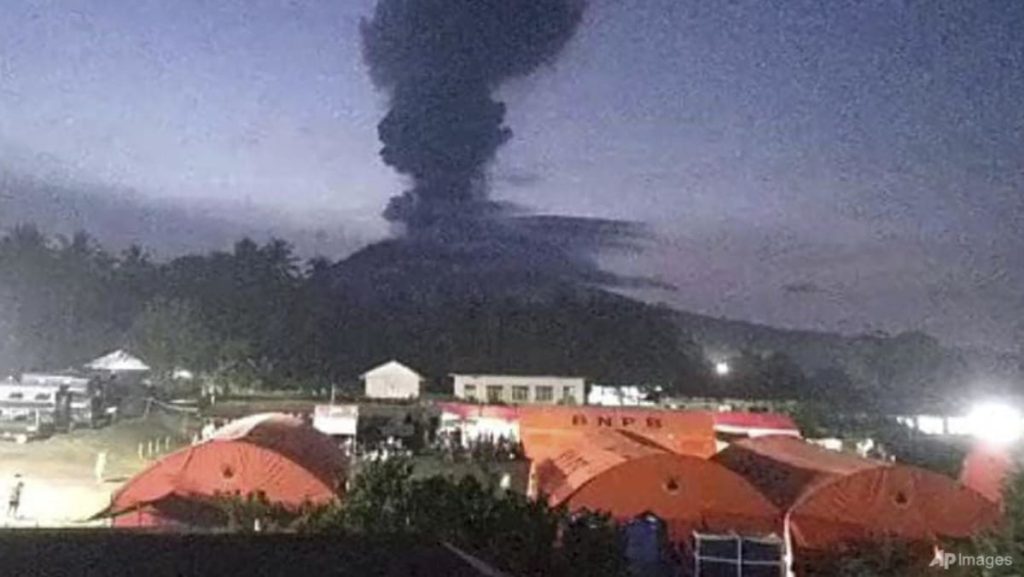Indonesia’s Mount Ibu volcano on the eastern island of Halmahera erupted twice on Thursday, spewing lava and rocks into the night sky and producing a spectacular display of volcanic lightning. The first eruption occurred in the early hours of the morning, with incandescent lava and rocks being thrown out of the crater. The second eruption took place later in the morning, shooting volcanic ash as high as 1,200m. The volcano is currently at the highest alert level, with the 7km radius around the crater being restricted from any activities.
This recent volcanic activity is part of a series of eruptions that have been happening since May. The Ibu volcano erupted on Tuesday as well, sending columns of grey ash up to 5km in the sky. Despite the ongoing eruptions, authorities have only evacuated seven villages near the volcano since May 16 and have not planned any new evacuations following the most recent eruption. Indonesia is situated on the Pacific “Ring of Fire,” known for its high levels of seismic activity, with a total of 127 active volcanoes across the country.
The volcanic eruptions in Indonesia have caused devastating effects in recent months. In North Sulawesi province, the eruption of Ruang volcano led to the evacuation of over 12,000 people. Additionally, flash floods and cold lava flows from Mount Marapi in West Sumatra province resulted in the deaths of at least 60 people last month. The country faces constant threats from its active volcanoes, which can have serious repercussions on the surrounding communities and infrastructure.
The PVMBG, Indonesia’s volcanology agency, is closely monitoring the situation at Mount Ibu and has been providing updates on the volcanic activity. The agency has issued a high alert level for the volcano and has restricted any activities within a 7km radius of the crater. Images from PVMBG have shown clouds of grey ash billowing into the sky from the crater during the recent eruptions, highlighting the intensity of the volcanic activity taking place at Mount Ibu.
The eruptions at Mount Ibu have been characterized by the emission of red bright lava and rocks, creating a spectacular visual display for onlookers. The volcanic lightning produced during the eruptions adds to the dramatic nature of the events, further emphasizing the power and unpredictability of Indonesia’s active volcanoes. The ongoing eruptions serve as a reminder of the constant threat posed by volcanic activity in the region, requiring continued monitoring and preparedness measures to ensure the safety of local communities and minimize the impact of future eruptions.
As Indonesia continues to experience volcanic activity across the country, the government and relevant agencies will need to remain vigilant in monitoring these volcanoes and implementing safety measures to protect the population. The recent eruptions at Mount Ibu highlight the need for proactive measures to prevent further loss of life and property damage from volcanic events. With Indonesia’s location on the Pacific “Ring of Fire,” the country will continue to be at risk of volcanic eruptions, necessitating ongoing preparedness and response efforts to mitigate the impact on communities living near active volcanoes.


